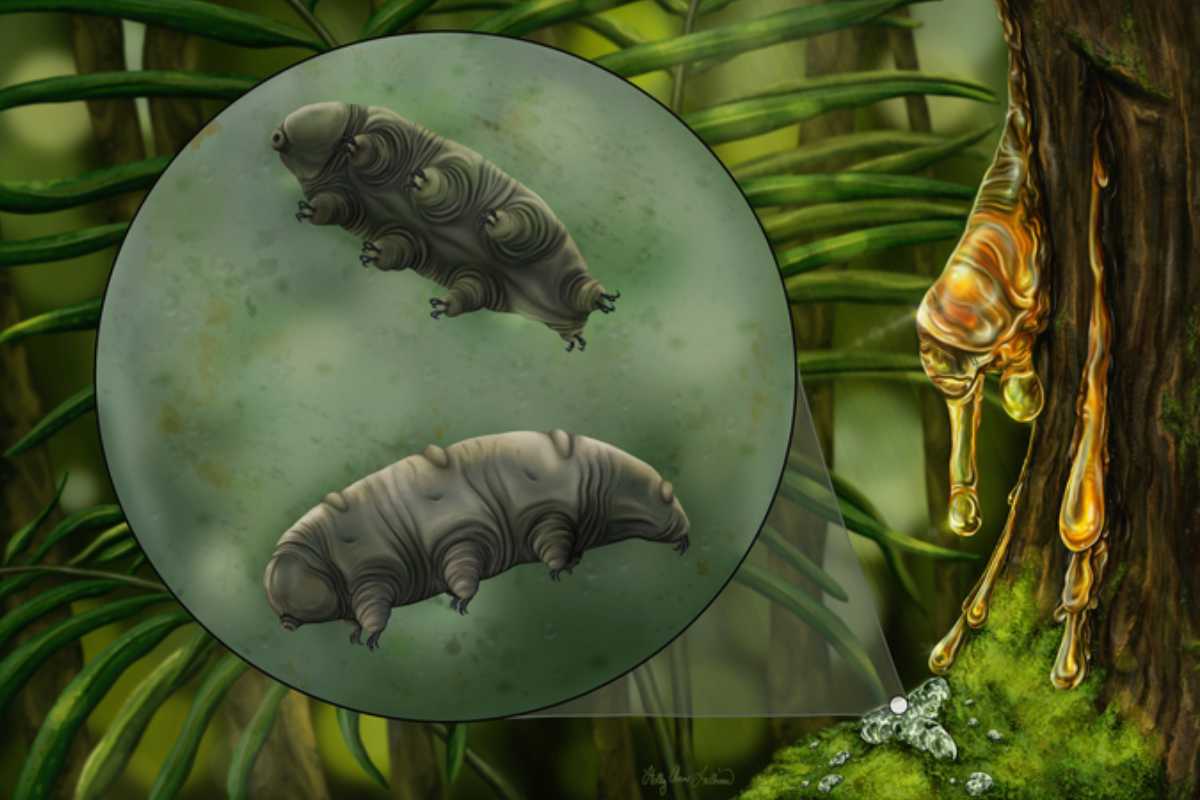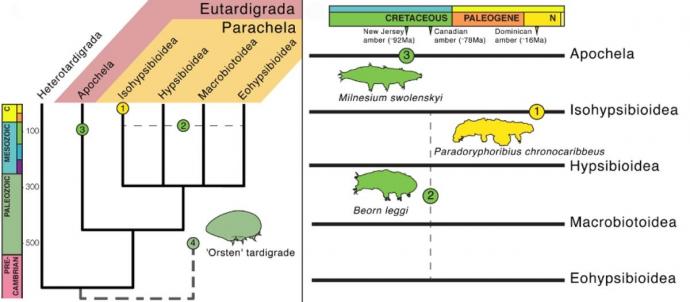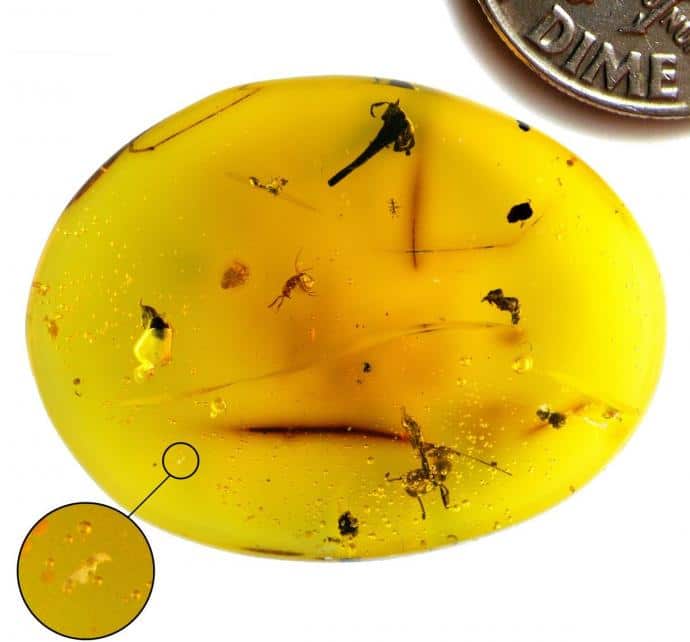
The rare find provides a unique insight into the evolutionary history of an organism that has survived five mass extinctions.
Tartars are famous for their amazing ability to survive the most extreme conditions. For example, they can withstand the vacuum of space and have even come back to life after being frozen in Antarctic moss for decades. But as hard as it is to kill the bizarre microscopic creature, it’s even harder to find a fossilized specimen. And yet researchers have now succeeded.
Tartars are microscopic organisms that are estimated to have emerged about 540 million years ago. They can be found in the soil and on plants. They reach a body length of about half a millimeter and a width of about 1/5 millimeters, making them almost invisible to the naked eye. Tartars are widespread in nature. A tuft of moss, for example, can accommodate at least thousands of specimens. In addition, they are tough rascals. For example, you can freeze them for more than thirty years: after thawing they simply resume their lives. They can also survive without water for up to ten years, they even survive a lack of oxygen and are resistant to cosmic radiation. And when researchers recently put them in a special gun to fire them, the tardigrades were able to retell that too.
It’s a remarkable achievement, considering it’s only the third time scientists have encountered a fossilized tardigrade. The researchers discovered the tardigrade in a 16-million-year-old piece of amber, which dates from the Miocene.

Timelined the three discoveries of fossilized tardigrades. Image: NJIT/Harvar
The new genus and species are respectively Paradoryphoribius chronocaribbeus and pdo. chronocaribbeus called. “The discovery of a fossilized tardigrade is something that only happens once in a generation,” said researcher Phil Barden. “What’s so remarkable is that tardigrades have actually seen everything on Earth, from the fall of the dinosaurs to the emergence of plants. Yet we know almost no fossils. The discovery of fossil remains of a tardigrade is therefore very exciting.”
Size
It is therefore not surprising that this rarely happens. Tartars are very small and are hardly noticeable due to their minuscule appearance. So is pdo. chronocaribbeus half a millimeter in size. “It’s just a faint spot in amber,” Barden explains. “pdo. chronocaribbeus was enclosed in a corner of a piece of amber containing three different ant species that our lab had studied. The tardigrade has been overlooked for months.”

The relevant piece of amber with the discovered fossilized tardigrade encircled. Image: Phillip Barden (Harvard/NJIT)
pdo. chronocaribbeus turns out to be a relative of today’s superfamily after analysis Isohypsibioidea. In addition, it represents the first tardigrade fossil dating from the Cenozoic; the current geological epoch that began some 66 million years ago. “At first glance, this fossil resembles modern tardigrades, due to its relatively simple external morphology,” said researcher Marc Mapalo. “But for the first time, we have also managed to visualize the internal anatomy. As a result, we saw striking features that we do not see in living organisms. Not only does this allow us to classify this tardigrade under a new genus, but we can now examine the evolutionary changes that this group of organisms has experienced over millions of years.”
Evolution
According to the researchers, the rare find gives us a unique insight into the evolutionary history of an organism that has survived five mass extinctions. For example, it can provide more insight into the evolutionary events that shaped the more than 1,300 living species today, with all their idiosyncrasies. “We’ve only seen the tip of the iceberg when it comes to our understanding of living tardigrades,” Barden says. “The study not only reminds us that we have very few tardigrade fossils, but we also know very little about today’s species.”
The researchers hope that other scientists will keep their eyes open for other well-hidden fossil tardigrades. “We hope this work encourages others to look more closely at pieces of amber to better understand these mysterious organisms,” said study researcher Javier Ortega-Hernandez.
Source material:
““Once-in-a-generation” tardigrade fossil discovery reveals new species in 16-million-year-old amber” – New Jersey Institute of Technology
Image at the top of this article: Holly Sullivan (Harvard/NJIT)